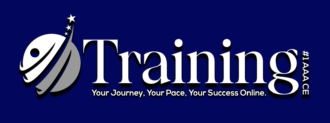Introduction
Education is the cornerstone of a thriving society, and teachers play a crucial role in shaping the minds of future generations. However, in recent years, concerns have arisen about a potential teacher shortage in the United States. Let’s examine the current state of the teaching profession, explore the factors contributing to a possible shortage, discuss the implications for education, and delve into additional strategies to address this challenge. By understanding the complexities surrounding this issue and considering comprehensive solutions, we can work towards ensuring quality education.

The State of the Teaching Profession
Teaching is a noble and rewarding profession, but it faces significant challenges in the United States. According to data from the U.S. Department of Education, there are approximately 3.7 million public school teachers in the country. While this may seem like a substantial number, certain regions and subjects face severe shortages. For example, rural areas often struggle to attract and retain qualified teachers due to limited resources and geographic isolation. In subjects like mathematics, science, special education, and English language learning, the demand for teachers outpaces the supply.
Furthermore, many teachers experience high levels of stress, low job satisfaction, and limited opportunities for professional growth. Factors such as heavy workloads, administrative demands, and a lack of support can contribute to these challenges. Addressing these issues is crucial to both attracting new teachers to the profession and retaining experienced educators.
Factors Contributing to the Teacher Shortage
Several factors contribute to the potential teacher shortage in the United States. Firstly, there is a growing demand for teachers due to population growth, increased enrollment, and a higher need for specialized educators. The implementation of programs like early childhood education and expansion of special education services have increased the demand for qualified teachers in these areas.
Secondly, attrition rates among teachers are a significant concern. Many experienced educators are leaving the profession due to retirement, dissatisfaction with working conditions, low salaries, or lack of support. The workload and stress of teaching can take a toll on teachers’ physical and mental well-being, leading them to seek alternative careers.
Additionally, new teachers often face challenges in their early years, including limited classroom management skills, lack of mentoring, and insufficient professional development opportunities. This can result in a higher attrition rate among novice educators who feel overwhelmed and ill-prepared to meet the demands of the profession.
Moreover, teacher preparation programs and recruitment efforts are not meeting the demand for qualified teachers. Many aspiring educators face barriers to entry, such as high tuition costs, rigorous certification requirements, and limited availability of program options. The pipeline for new teachers must be strengthened to address the projected need for qualified educators.
Implications for Education
The teacher shortage has significant implications for education in the United States. Overcrowded classrooms, larger student-teacher ratios, and limited access to specialized instruction can negatively impact student learning outcomes. Schools may struggle to provide high-quality education, particularly in disadvantaged communities where the shortage is more pronounced. Students in these areas often face additional challenges, such as poverty and limited resources, making the impact of the teacher shortage even more profound.
Moreover, the burden of the teacher shortage falls disproportionately on marginalized students, exacerbating existing educational inequities. Students from low-income backgrounds and communities of color are more likely to attend schools with high teacher turnover rates and a lack of qualified educators. This perpetuates disparities in educational opportunities and contributes to the achievement gap.
Solutions to Address the Teacher Shortage
Addressing the teacher shortage requires a comprehensive and collaborative approach that focuses on recruitment, retention, and support for educators. In addition to the strategies mentioned earlier, here are additional solutions to consider:
Increase Investment in Education: Adequate funding is crucial to attract and retain high-quality teachers. Increased investment in education can support competitive salaries, professional development programs, and resources that enhance the teaching and learning environment. This includes allocating resources to schools in low-income communities that often struggle to attract qualified teachers.
Expand Alternative Pathways to Teaching: Creating alternative pathways to teaching can help recruit individuals with valuable expertise and diverse backgrounds who may not follow traditional routes into the profession. Programs such as Teach For America and Troops to Teachers provide opportunities for professionals in other fields to transition into teaching, bringing their unique skills and perspectives to the classroom.
Foster Collaboration between Schools and Teacher Preparation Programs: Strengthening partnerships between schools and teacher preparation programs can ensure that new educators are well-prepared for the realities of the classroom. This collaboration can involve shared resources, mentorship programs, and a focus on practical classroom experience during the training process.
Support Teacher Leadership and Career Advancement: Providing opportunities for teacher leadership and career advancement can enhance job satisfaction and encourage experienced educators to remain in the profession. Programs that offer opportunities for mentorship, peer collaboration, and specialized roles, such as instructional coaches or curriculum specialists, can create pathways for growth and professional development.
Prioritize Student Loan Forgiveness and Financial Incentives: Offering student loan forgiveness programs and financial incentives, such as loan repayment assistance and scholarships, can attract talented individuals to the teaching profession and help alleviate the financial burden often associated with pursuing a teaching career.
The potential teacher shortage in the United States poses significant challenges to the education system. By recognizing the complexity of this issue and implementing comprehensive strategies, we can address the shortage and ensure quality education for all students. Investing in competitive salaries, supportive work environments, and professional development opportunities is crucial to attract and retain talented educators. Additionally, expanding alternative pathways to teaching, fostering collaboration between schools and teacher preparation programs, and providing financial incentives can help address the shortage and create a diverse and highly skilled teaching workforce. By prioritizing the teaching profession and valuing the role of educators, we can shape a brighter future for education in the United States. Stay safe and learn more about health-related continuing education, eetsonline.com.
